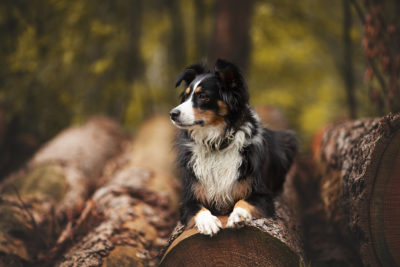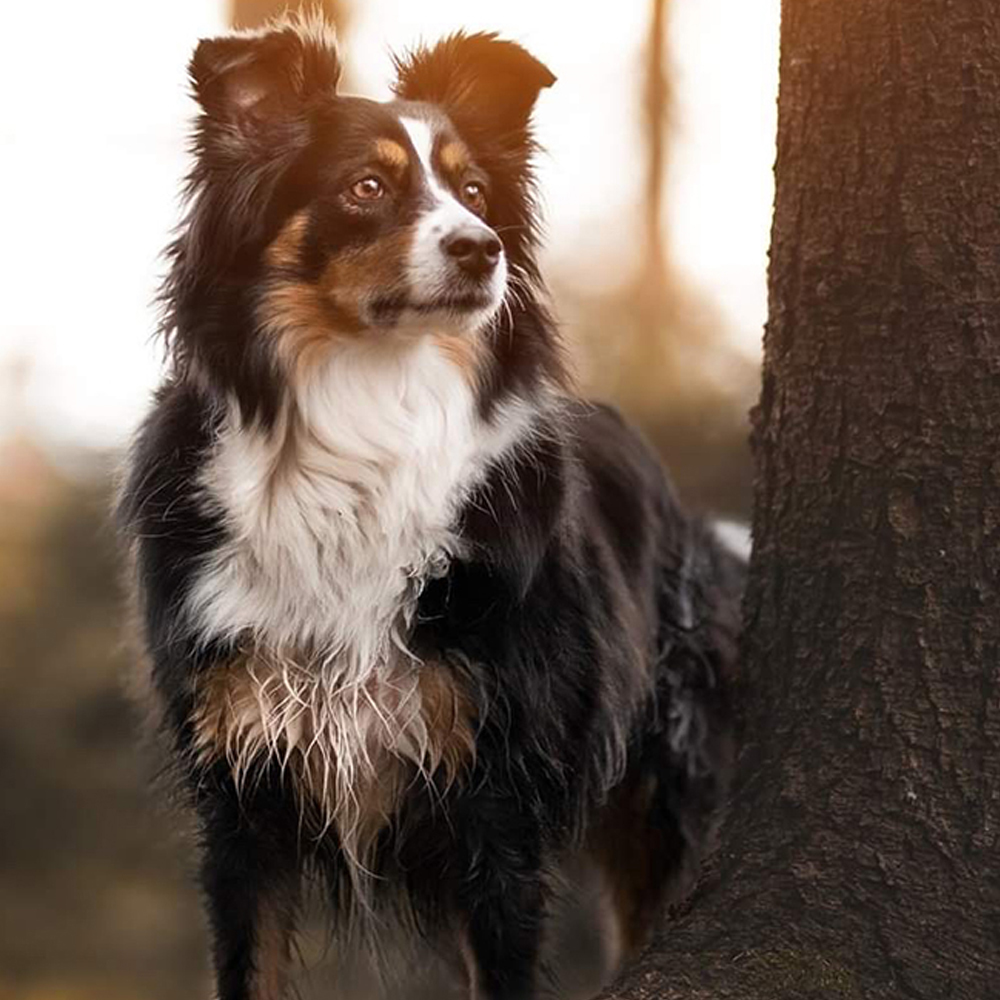Time with your dog - Agility training
Agility training outdoors
Whether spring, summer, autumn or winter - Agility not only keeps your dog mentally and physically fit, it is also fun and strengthens the bond with your favourite. With our agility course we explain to you how the long walks with your dog can develop into a sporting highlight or how the nearby forest can be transformed into a playground.
You need that:
- 1 snack bag
- Treats
- if necessary a towing line ideally with tug absorber for jumps and fast movements
- Park and meadow area, forest or open field
(with sufficient benches, large flat boulders, tree stumps and tree trunks)
- Plan for the course with your dog
Our tip: Start with simple exercises on which further training can build. Remember that your darling needs to warm up before he can put a lot of strain on his joints. Our course therefore starts with a relaxed, mentally stimulating exercise on the ground and then offers individual training units with hurdles and obstacles.
Agility training - how it works
1. Parking
First of all, you draw your dog's attention to you. Now throw a treat about 1.5 m behind you. Once your dog has picked it up, show him the second treat by holding it between your legs from the front. If your pet is standing directly between your legs, reward him with the treat and praise him extensively. Use a specific command for this exercise, such as "Parking!" or "Garage!".
In the next step, your dog should also sit down. As soon as your dog is standing between your legs, hold the treat slightly above his muzzle and pull it towards you at about groin level. This movement raises your dog's head and automatically lowers his buttocks.
The extension of this training unit is running together. For this exercise, you have to hold the treat in front of your dog after parking, walk a few steps and then stop again. If your pet moves between your legs and stops at the same time as you do, praise him extensively and feed him a treat. You can choose, for example, "Forward!" or "March!" as the command for running forward.
Our tip: Take only a few small steps over a distance of 1-2 m at the beginning. When your darling has fully understood the command, you can gradually extend the running distance.
2. Raise front paws
For this exercise you will need a boost such as a tree stump or a large rock/boulder. Stand in front of the obstacle and lead your dog to the opposite side. Hold the treat over the elevation, just high enough so that your dog can only approach it when he puts his front paws on the elevation. Give a clear command such as "Come up!" or "Up!".
3. Climb up
This training is based on putting the front paws upright. The aim is now that your pet climbs completely on the elevation. Hold the treat a bit higher so that it cannot be reached by simply putting up the front paws, but your dog must also lift his hind legs onto the elevation. For this exercise, give a command similar to the one used for raising the front paws, e.g. "All up!" This exercise can be extended to jump up as soon as increased speed comes into the course training. When you give the command "All up!", your favourite will then no longer slowly climb up but jump on the elevation.
When your dog has fully understood the command, let him perform different basic commands such as "Sit!" and "Lie down!" or "Stay!".

4. Balancing
For the balancing training you need a long bench or ideally a long, lying tree trunk. First you let your darling climb onto the tree trunk. Praise your dog, feed him a treat and have the next one ready right under his nose. Now hold the treat in the middle of the tree trunk, give a command to start running, such as "Go!" or "Walk!" and walk forward. First try to walk a maximum of 2 mr with your darling. Depending on the width of the tree trunk, balancing can be a great challenge for your pet. With good balance and a little practice you can extend the distance.
5. Jumping
The aim of this unit is for your darling to jump over a tree trunk. In order for your dog to understand the exercise, you first jump over the obstacle together with him. Use a command such as "Hop!" or "Over!". Immediately after the jump, you feed your dog a treat. The next step is to indicate your own jumping so that your dog jumps over the obstacle on your command alone. This exercise can be extended to a "slalom", in which the dog jumps several times in a row from one side to the other.
6. Running around
For this exercise, find a thick tree like an old oak tree. Stand next to your dog and hold a treat in front of his nose. Give him the command to go. Now go around the tree and in the movement around the obstacle choose a command like "Around" or "Go around". Once you have circled the tree with your dog, give him the treat. Repeat this exercise several times. Once your dog has understood the command, he can walk on his own. You can now instruct him which obstacle he should move around. When training, pay attention to changes in direction so that your dog's coordination is optimally promoted. This exercise can be extended to other obstacles and slalom runs as soon as routine is established.
All agility units can be executed without treats and exclusively via the individual commands if there is sufficient routine. You can gradually increase the initially slow training speed so that your darling is not only mentally challenged but also athletically.
Have you started to sweat? We are curious about your experiences!
